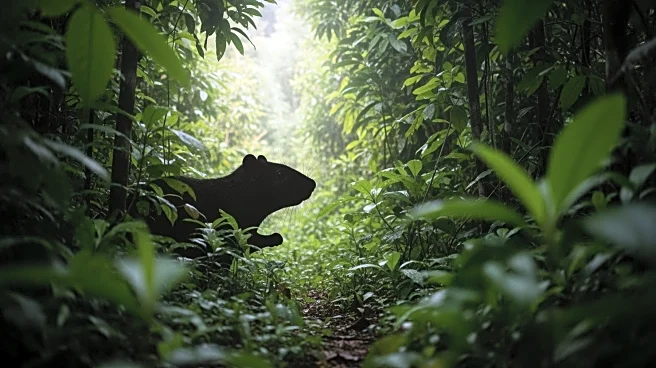What's Happening?
A recent study conducted by Satoshi Kojima and his team at the Korea Brain Research Institute has provided new insights into why birds sing at dawn. The research focused on zebra finches and revealed that
darkness suppresses their singing, leading to a heightened motivation to sing once light appears. The study involved manipulating the lighting conditions for the birds, showing that a delay in light exposure increased the intensity of their singing. Additionally, the use of luzindole, a drug that blocks melatonin effects, demonstrated that birds woke up and began singing earlier when the hormone's influence was reduced. The findings suggest that the dawn chorus may serve to restore or optimize the birds' vocal systems after a night of silence.
Why It's Important?
Understanding the dawn chorus has implications for the study of avian behavior and ecology. The research highlights the role of environmental cues in animal behavior, particularly how light influences biological rhythms. This could impact conservation strategies, as artificial lighting in urban areas might disrupt these natural patterns. Moreover, the study provides a basis for further exploration into how different bird species might be affected by similar mechanisms, potentially influencing mating and communication strategies. The findings could also inform broader ecological studies on how animals adapt to changing environments, particularly in the context of increasing urbanization and light pollution.
What's Next?
Future research may explore the applicability of these findings to other bird species, as well as the potential impact of artificial lighting on natural behaviors. Scientists might investigate whether similar mechanisms are present in other animals and how these insights could contribute to conservation efforts. Additionally, there could be studies focusing on the evolutionary advantages of the dawn chorus and its role in species survival and adaptation. Researchers may also look into the long-term effects of disrupted light cycles on bird populations and their ecosystems.
Beyond the Headlines
The study raises questions about the broader implications of human-induced environmental changes, such as light pollution, on wildlife. It suggests a need for policies that mitigate these impacts to preserve natural behaviors essential for species survival. The research also touches on the complexity of animal communication and the potential for further discoveries in how animals interact with their environment. This could lead to a deeper understanding of the interconnectedness of ecosystems and the importance of maintaining natural cycles.











